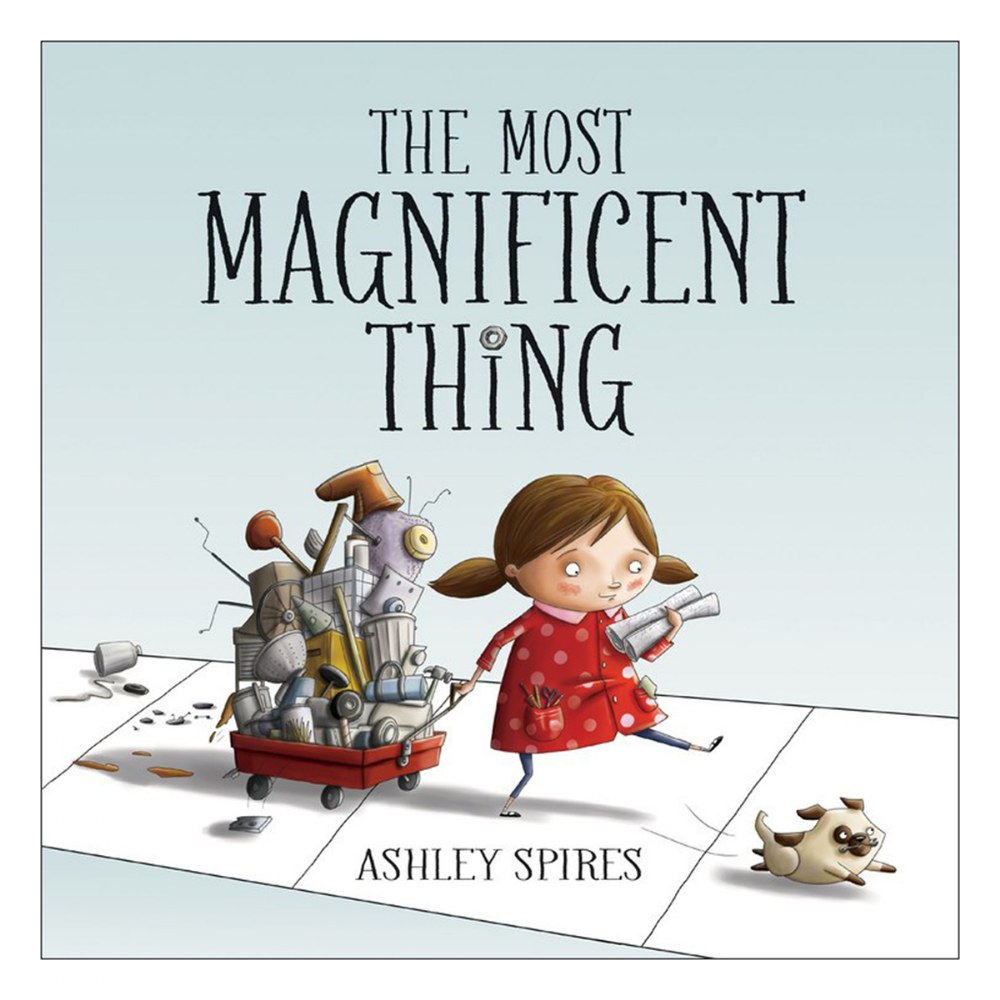SEL Read Aloud: The Most Magnificent Thing by Ashley Spires

Summary
Comprehension Questions
Six questions aligned to Bloom’s taxonomy for teacher’s to evaluate students’ comprehension
- Remembering: What materials does the girl have to make her creation?
- Understanding: What is the role of the dog in the story?
- Applying: If you were in the girl’s shoes, how would you calm down and think of a new way to approach a problem?
- Analyzing: How does the girl’s creative process mirror the way some people might approach challenges in real life?
- Evaluating: Do you think the girl’s persistence and determination were more important than the actual success of the project? Why?
- Creating: How could the girl improve her final creation even more, based on what she learned throughout the story?
CASEL Discussion Questions
Five questions aligned to the CASEL competencies for teachers to foster an engaging discussion and foster social-emotional learning
- Self-Awareness: When the girl feels frustrated, how does she express her emotions? Can you relate to her experience?
- Self-Management: How does the girl manage her frustration when her creation keeps failing?
- Social Awareness: How does the dog in the story react to the girl’s frustration, and how does it help her understand her emotions?
- Relationship Skills: How can you work with others (like the girl does with her dog) to solve problems when things get difficult?
- Responsible Decision-Making: How does the girl’s decision to take a break help her when she’s feeling frustrated? What can we learn from that decision?
Design Thinking Challenge
Take students’ learning even further by incorporating the Imagineerz design thinking framework
Design a Magnificent Dog Walker
Understand
- Start by reading The Most Magnificent Thing by Ashley Spires. Discuss how the girl works hard to create her “most magnificent thing,” but faces challenges and setbacks along the way. Emphasize the importance of perseverance, adjusting designs, and using problem-solving skills when things don’t go as planned.
- Ask students to reflect on:
- Why was the girl’s first attempt at creating her “most magnificent thing” unsuccessful?
- What did she do after it didn’t work?
- What lesson did she learn from her mistakes?
- How can perseverance and trial-and-error help us solve problems?
Ideate
- Now, students will focus on designing a solution to a specific problem, just like the girl in the story. Challenge them to come up with ideas for building a dog walker for the girl’s dog. The idea is to help her walk her dog in a more fun or efficient way. The challenge should be simple, like creating a mechanism or tool that makes the walk easier for the dog, or allows the girl to focus on other things.
- Ask students to brainstorm:
- What might make it easier for the girl to walk her dog?
- How can you design something that helps the girl control her dog or keep it safe while walking?
- What materials can you use to build your dog-walking invention?
- How could your design be fun, functional, and easy for the girl to use?
Prototype
- In groups or individually, students will create their dog-walking inventions using materials such as cardboard, paper, string, tape, and scissors. They will build something tangible that helps the girl walk her dog in a better or easier way.
- Instructions for students:
- Choose one idea and start building your dog-walking solution. It can be a special leash, a device that makes the dog stay in one place, or something that makes walking the dog easier for the girl.
- Think about how you can test your design as you build it. If it doesn’t work the first time, what will you change to make it better?
- Remember that your design doesn’t have to be perfect—focus on making something functional and improving it as you go!
Test
- Once the prototypes are built, students will present their creations to the class. They should explain how their design helps the girl walk her dog more effectively, and share what adjustments they made during the building process.
- During the presentations, ask students to:
- Describe how their invention works to help the girl walk her dog.
- Explain what changes they made after testing their designs.
- Discuss what worked well and what they would change to improve it.
- Offer feedback to their classmates on how they can improve their designs.
Read Aloud
If you appreciated getting to read this book with your class, you might also want to share this book with them!
Additional Resources
Copyright Notice
The image on this page comes from the book The Most Magnificent Thing by Ashley Spires. Copyright © 2014 by Ashley Spires.


